ASRock DeskMini 110 mini-STX PC Review
by Ganesh T S on June 8, 2016 8:45 AM ESTNetworking and Storage Performance
Networking and storage are two major aspects which influence our experience with any computing system. This section presents results from our evaluation of these aspects in the ASRock DeskMini 110. On the storage side, one option would be repetition of our strenuous SSD review tests on the drive(s) in the PC. Fortunately, to avoid that overkill, PCMark 8 has a storage bench where certain common workloads such as loading games and document processing are replayed on the target drive. Results are presented in two forms, one being a benchmark number and the other, a bandwidth figure. We ran the PCMark 8 storage bench on selected PCs and the results are presented below.
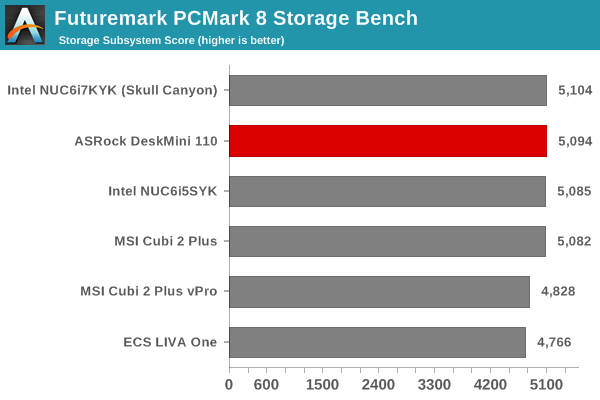
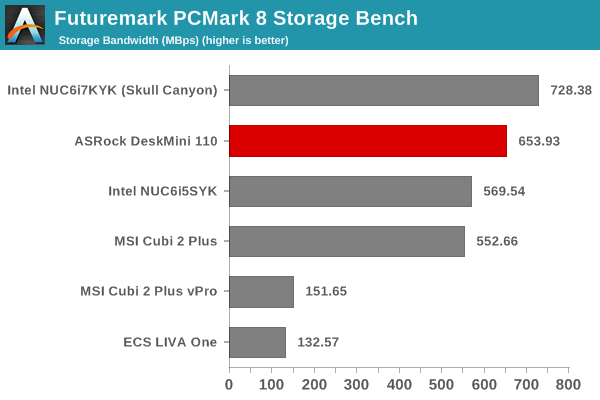
Despite using the same SSD, we do see some difference in scores between Skull Canyon and the DeskMini. This probably results from differences in the CPU capabilities, since the storage bandwidth actually reflects the amount of time that the CPU was waiting on at least one I/O request to the disk.
The important aspect to test from the DeskMini viewpoint is PCIe 3.0 x4 support (since the H110 has only PCIe 2.0 support). We ran the quick CrystalDiskMark check and could see that the Samsung SSD 950 PRO showed its quoted performance numbers.
On the networking side, we restricted ourselves to the evaluation of the WLAN component. Our standard test router is the Netgear R7000 Nighthawk configured with both 2.4 GHz and 5 GHz networks. The router is placed approximately 20 ft. away, separated by a drywall (as in a typical US building). A wired client is connected to the R7000 and serves as one endpoint for iperf evaluation. The PC under test is made to connect to either the 5 GHz (preferred) or 2.4 GHz SSID and iperf tests are conducted for both TCP and UDP transfers. It is ensured that the PC under test is the only wireless client for the Netgear R7000. We evaluate total throughput for up to 32 simultaneous TCP connections using iperf and present the highest number in the graph below.
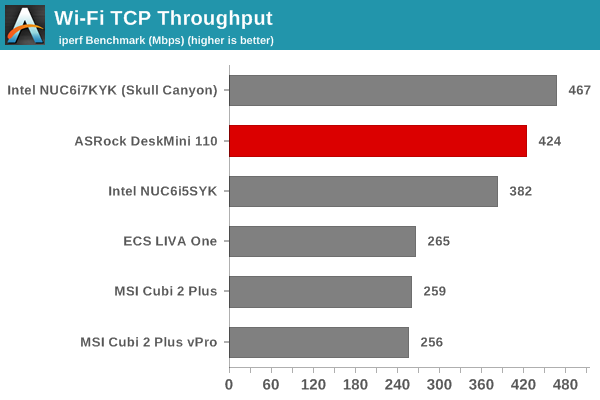
In the UDP case, we try to transfer data at the highest rate possible for which we get less than 1% packet loss.
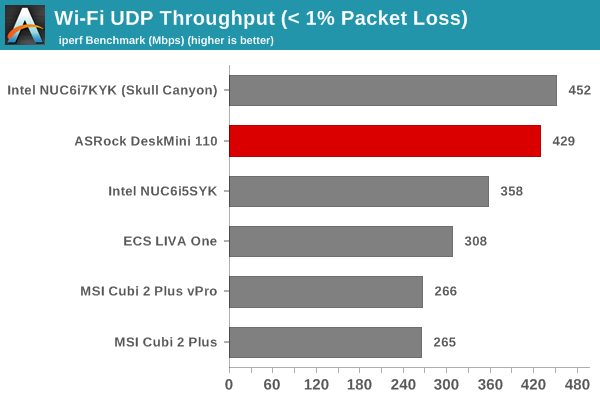
Our main aim with the WLAN component was to show that the DeskMini could indeed support a M.2 PCIe WLAN module. Intel actually provided us with a AC8260 card meant for the Skull Canyon NUC. Therefore, the antenna type we got was really not a good fit for the all-metal chassis. We ended up doing the above evaluation with the antennae not mounted to the chassis, but just hanging out of the system. Despite this unwieldy setup, the system had no trouble getting good numbers in our bandwidth test.
The DeskMini chassis does provide three perforations diagonally across the M.2 WLAN slot in the rear to install screw-type antennas. Consumers can keep this in mind while hunting for the appropriate WLAN component to complete a DeskMini build.


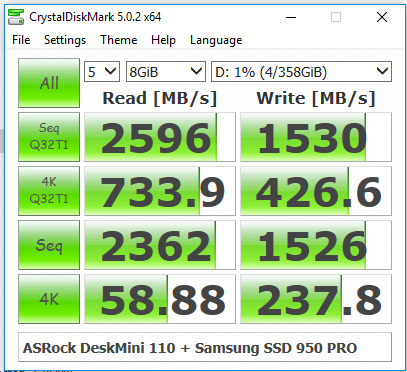









85 Comments
View All Comments
dj_aris - Wednesday, June 8, 2016 - link
What if mini-STX boards came with an MXM slot? That would spawn a really fresh and interesting form factor...DanNeely - Wednesday, June 8, 2016 - link
Unless the OEM was also able to solve the problem of MXM cards not being readily available on the aftermarket (and what is available tending to be obscenely priced) I suspect it'd be more likely to spawn frustration and rage.bill.rookard - Wednesday, June 8, 2016 - link
Well, that's the point of putting it out there. If you make it available, and people do start to use it, companies will start to produce boards for it, competition ensues, prices drop and availability goes up.nathanddrews - Wednesday, June 8, 2016 - link
But MXM has been available for over a decade (laptops) and it hasn't helped anything. I still remember trying to upgrade my Dell laptop to a 7950GTX and the MXM chip was $900 on eBay. even now, the 980M is over $800. If it hasn't caught on by now...xchaotic - Wednesday, June 8, 2016 - link
Basically MXM, if priced exactly the same as desktop PCIE boards should give vendors more margin. So IMO MXM should be prices identically to their big cousins and that wouldn't be bad for both consumers and OEMswolrah - Wednesday, June 8, 2016 - link
Except that it would make no sense for them to be priced the same considering the same parts would have to be packed much more densely in to the MXM board compared to a desktop board.That's like saying a laptop should be the same price as a comparable desktop + monitor + keyboard + touchpad.
xenol - Wednesday, June 8, 2016 - link
Probably the reason why MXM boards are so expensive is that there are no official markets for them. People complain why Mini-ITX boards can be as pricey as ATX boards or why SFX power supplies are as pricey as ATX ones. They're probably pricey because there's a niche demand for them (though I'd argue mITX boards tend to have more core features than ATX ones)Morawka - Wednesday, June 8, 2016 - link
No cooling fan, no heatsink, no display outputs, reduced bill of materialsNamisecond - Wednesday, July 6, 2016 - link
You're asking for 80 square inches of board real estate to be miniaturized and crammed into about 5., and then to be sold at the same rate as that bigger item.You may as well demand all labor to be priced at the same rate as that of a Shenzhen assembly line worker.
barleyguy - Wednesday, June 8, 2016 - link
I had an Asus laptop with an MXM slot. The major problem there was compatibility. Asus put custom firmware on the boards that was required for the computer to function. Basically the first 512K (I think) of the firmware was Asus specific, and the remaining part came from NVidia.I think that's been the issue with MXM all along: You can't just buy any laptop with the slot, buy any card for the slot, and expect it to work without serious technical wizardry.
Low profile PCI Express probably makes more sense. It wouldn't greatly increase the size of a box like this.